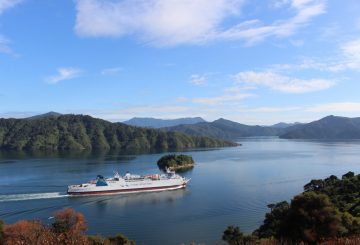의회의 교육 및 인력 선발 위원회는 차터 스쿨로 알려진 공립 사립 학교를 다시 설립하는 법안을 논의하고 있습니다.노동조합위원회 (CTU) 는 이 법안이 노동, 인권 및 무역 협정을 위반할 것이라고 주장합니다.CTU의 Erin Polaczuk은 최근 법안이 변경됨에 따라 차터 스쿨 교직원이 단체 협약에 가입하지 못하게 되어 국제 노동 규정에 위배될 수 있다고 언급했습니다.
폴라추크는 또한 교육부가 이 법안이 영국 및 EU와의 자유 무역 협정과 상충될 수 있다고 경고했다고 밝혔다.이로 인해 주립학교 교사들은 차터 스쿨에서 일하도록 강요받을 수 있는데, 교육부는 차터 스쿨이 노동 협약과 권리장전 법에 따른 권리를 침해할 수 있다고 생각합니다.이 문제에 관한 법률 자문 노트는 이후 규제 영향 설명서에서 법적 특권을 받았다는 이유로 삭제되었습니다.
피터 보셔 (Peter Boshier) 수석 옴부즈맨은 위원회에 차터 스쿨을 공식 정보법 (OIA) 에서 제외하면 학생, 학부모, 납세자에 대한 책임이 줄어들 것이라고 말했습니다.그는 공적 자금을 사용하는 모든 학교는 투명해야 하며 가족들도 동등하게 정보를 이용할 수 있어야 한다고 주장했습니다.
전직 차터 스쿨 교장인 알윈 풀 (Alwyn Poole) 은 보셔의 의견을 지지하며 네 개의 차터 스쿨에 지원할 계획을 세웠습니다.그는 차터스쿨 교사들이 주립학교 교사들보다 수입이 적다는 주장을 일축했다.
교육 연구 협회는 차터 스쿨이 필요하지 않다고 주장했습니다.브론윈 우드 (Bronwyn Wood) 대변인은 뉴질랜드의 학교들은 이미 많은 자유를 누리고 있으며, 학교 선택이 많을수록 부유한 가정에 혜택이 주어져 불평등이 심화될 것이라고 지적했다.그녀는 스웨덴의 비슷한 학교 시스템이 30년 만에 무너졌다고 말했습니다.
앤 켄든 (Ann Kendon) 교사는 뉴질랜드에서 필요하지 않은 학교 유형에 돈을 쓰는 것에 대해 우려를 표명했습니다.그녀는 차터 스쿨이 주립학교보다 더 나은 결과를 제공할 수 있을지 의심스러웠습니다.그녀의 동료인 Philip Kendon은 주립 학교 시스템이 교사들의 협력을 촉진하여 교육 향상에 도움이 된다고 말했습니다.그는 주정부 시스템이 더 나아질 수도 있지만 이미 잘 작동하고 있기 때문에 차터 스쿨이 필요하지 않다고 말했습니다.
두 교사 모두 평생을 공립학교에서 가르치는 데 헌신한 교육 전문가들의 이야기를 들어볼 것을 위원회에 촉구했습니다.그들은 차터 스쿨 제안을 진행하지 말 것을 요청했습니다.






























































